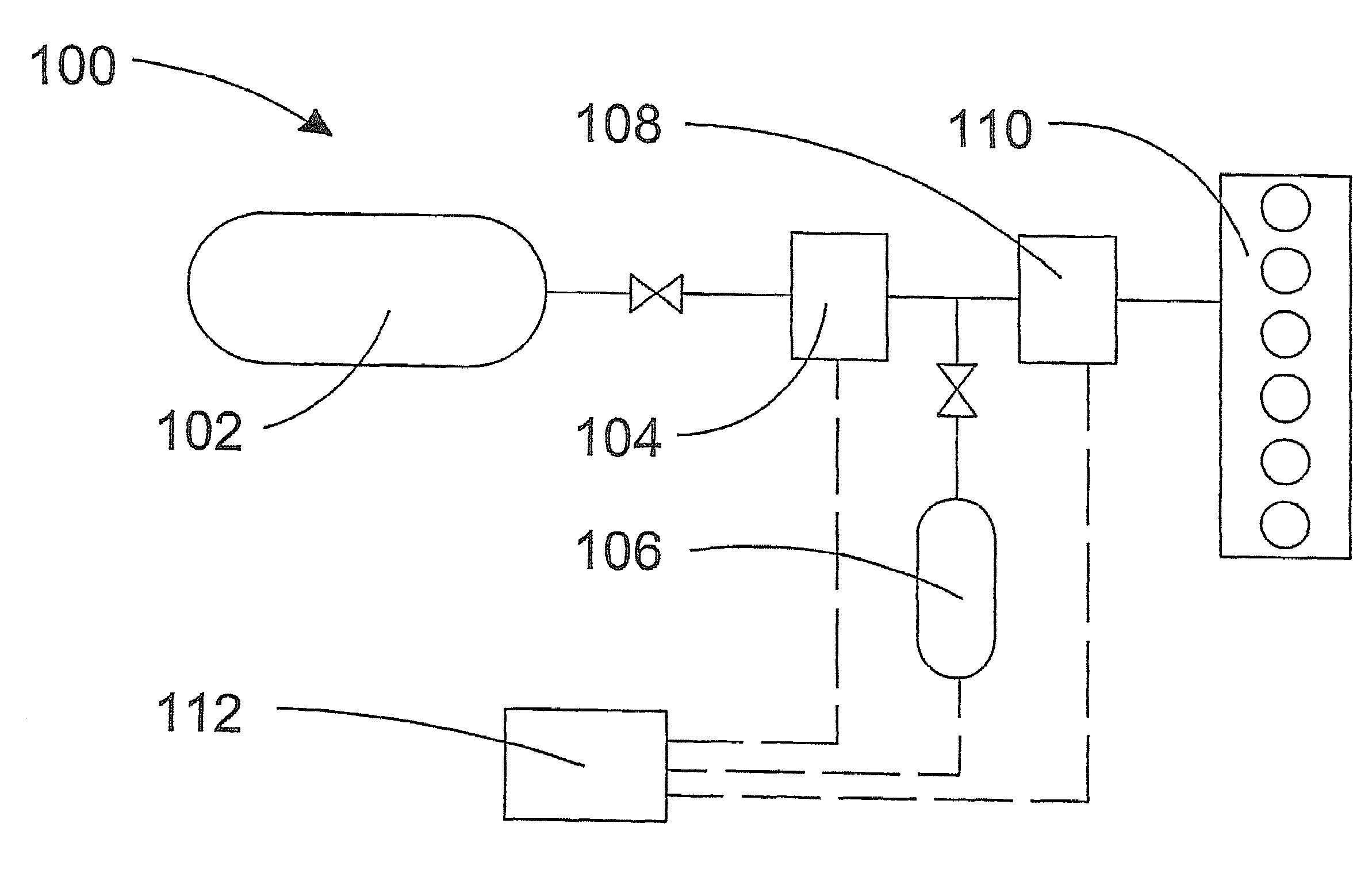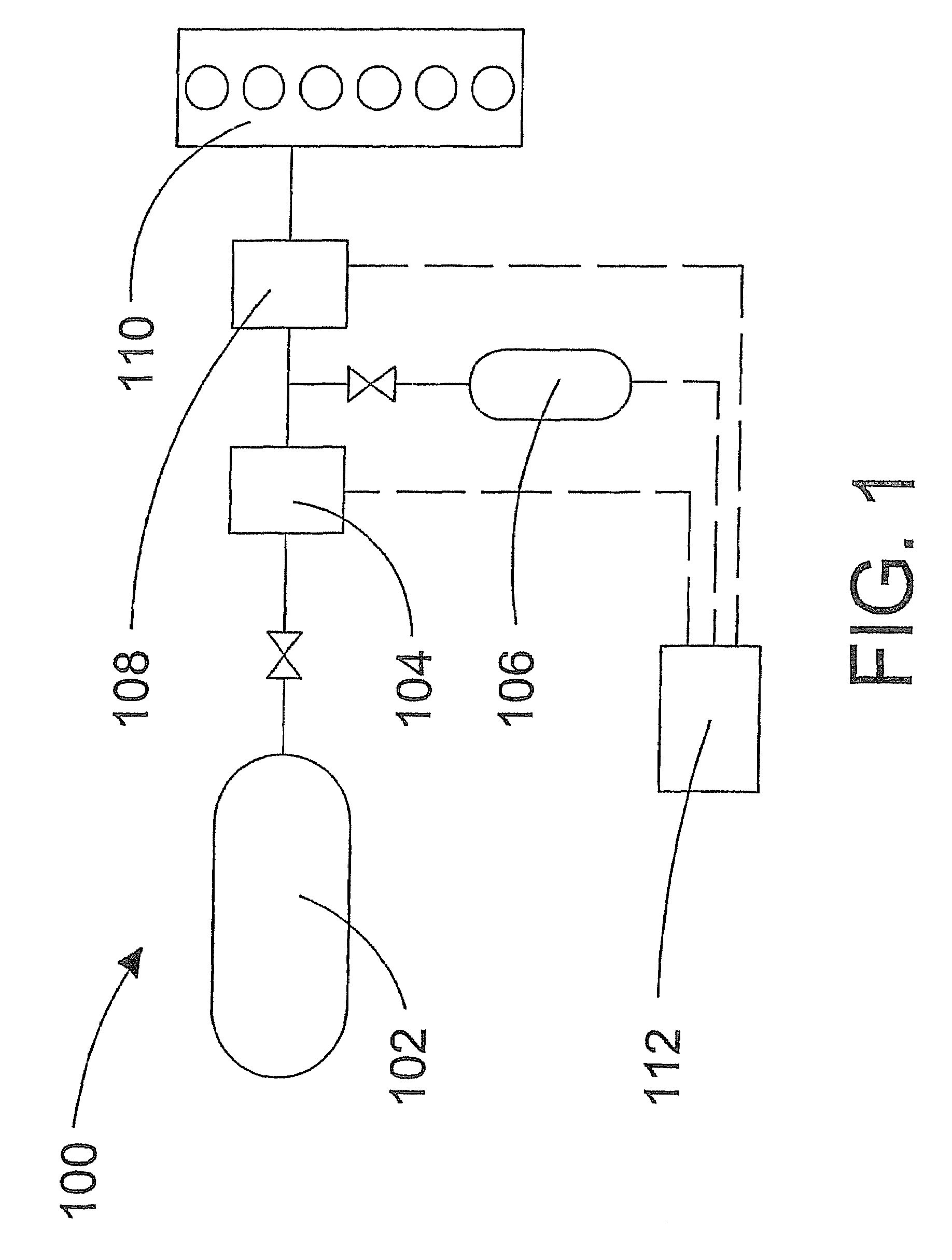High pressure gaseous fuel supply system for an internal combustion engine and a method of sealing connections between components to prevent leakage of a high pressure gaseous fuel
a gaseous fuel and internal combustion engine technology, applied in the direction of fuel supply equipment, fuel systems, fuel injection equipment, etc., can solve the problems of cost, availability and emissions benefits, present day gaseous-fuelled engines cannot match the performance and efficiency of diesel-fuelled engines, and no one has addressed the problem of sealing connections between components, so as to reduce the level of regulated emissions
- Summary
- Abstract
- Description
- Claims
- Application Information
AI Technical Summary
Benefits of technology
Problems solved by technology
Method used
Image
Examples
Embodiment Construction
)
[0040]In order to introduce a gaseous fuel directly into a combustion chamber near the end of the compression stroke, it is necessary to supply the fuel to a fuel injection valve at a pressure that is between at least 17 MPa and about 70 MPa. The fuel injection valve for introducing the gaseous fuel directly into the combustion chamber is typically inserted through the cylinder head, with a nozzle tip projecting into the combustion chamber. During engine operation, the constant temperature of the cylinder head around the fuel injection valve and its associated component seals can approach about 200° C. (about 392° F.), particularly where the fuel injection valve is closest to the combustion chamber and the exhaust manifold ports. Since conventional gaseous-fuelled engines have employed lower pressure fuel systems associated with forming a premixed fuel charge in the intake manifold, the problem of providing suitable seals for handling a gaseous fuel at higher pressures and temperat...
PUM
 Login to View More
Login to View More Abstract
Description
Claims
Application Information
 Login to View More
Login to View More - R&D
- Intellectual Property
- Life Sciences
- Materials
- Tech Scout
- Unparalleled Data Quality
- Higher Quality Content
- 60% Fewer Hallucinations
Browse by: Latest US Patents, China's latest patents, Technical Efficacy Thesaurus, Application Domain, Technology Topic, Popular Technical Reports.
© 2025 PatSnap. All rights reserved.Legal|Privacy policy|Modern Slavery Act Transparency Statement|Sitemap|About US| Contact US: help@patsnap.com



